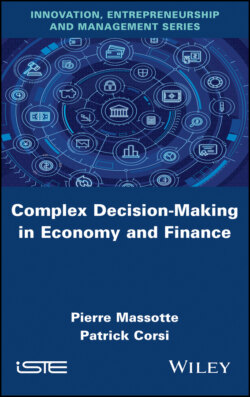Читать книгу Complex Decision-Making in Economy and Finance - Pierre Massotte - Страница 26
1.2.1. Structure and organization of system functions
ОглавлениеIn an industrial system as a whole, it is logical to consider a cellular organization similar to that found in living systems. Thus, a production system is composed of a set of agents, or cells, each with its own behavior. In this organization, although operations are defined a priori at the global level, each agent is good at autonomy; each agent carries out his or her own tasks and has his or her own operating modes in a predefined evolution space (field of eligible solutions, still called “prototypes”). Each agent is a complex system that can be subjected, under given conditions, to deterministic chaos or unpredictable behavior. In such systems, the difficulty results from the implementation of agents and interactions between several agents whose functions are different but complementary. In terms of a model and always referring to cellular approaches, the system’s activity is based on the exchange of messages from an agent. Messages are associated with an address (to allow for their dissemination and controlled distribution) and intercepted by other agents and then interpreted and executed.
It should be noted, which is not yet a generality in our industrial systems and is not taken into account in the models used, that the functions in question here are capable of controlled modifications: for example, multiple assignments of equipment or agents to the same task, moving an activity from one agent to another (migration), task differentiation or specialization, adapting an agent to changing contexts, task inhibition or agent removal. Moreover, the order in which these activities or inactivities are programmed reflects an organization’s maturity level. In terms of functionalities and organization, we find the characteristics encountered in increasingly sophisticated and complex societies: indeed, the difficulty increases when it comes to managing, depending on the context, problems of assignment and differentiation (variety of form), migration, adaptation (modification of function) and, finally, “suicide”.
